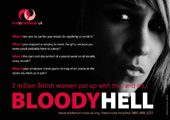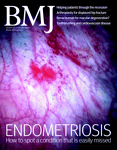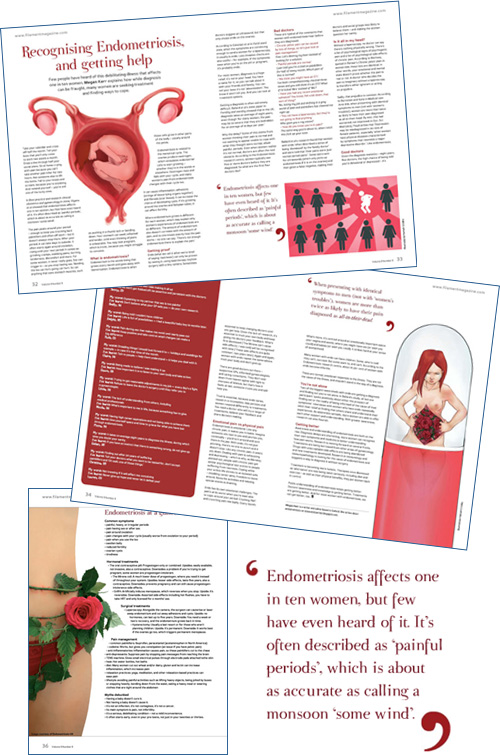I fight this.
I woke this morning, on the second day of my period, before my alarm, trying to roll around in pain but pinned by it like a butterfly impaled. I had a dream-vision of a capital A in my belly, all sharp serifs jutting into me. As the alarm went, the A dissolved back into its dream; the pain remained. I couldn't get out of bed. I couldn't stand, never mind shower. I took ibuprofen. If I'd been more awake, I'd have taken 2 paracetamol, less effective but faster - I should've taken paracetamol - but now I couldn't, too much on an empty stomach is bad - I lay for half an hour, processing the pain as it rolled and stabbed, waiting to get up and shower and munch oatcakes and hurtle out the house.
I could've phoned in ill, at that point. Any other class, and I would've - but they're my exam class - I adore them - I wanted to teach them the lesson I'd planned for them. But not so selfless, in the end: grim determination - come hell or high water, I will teach. I will go to my job; I will be normal.
It eased, enough. I showered, rushed, dressed, munched oatcakes, hurtled out the house and into the car (I prefer to walk, but hey, I've given that up some time back, can't walk and work). Swooping through Oxford, sun fluttering on lime trees and birches, the pain's still rolling - check the time: 8:30, an hour and a half since the ibuprofen. I shouldn't be feeling this. This is painkiller-peak-time. Never mind, at 9:30 I can layer on some paracetamol. Blast the car with the overture to Tannhauser, somewhere in its Teutonic grandeur the pain finds voice and makes sense.
Into the school, grand old building, once-upon-a-time a house, and in summer the teachers lie on the lawn gazing up at its welcoming windows, swapping plans for if it were their house and tales of its hauntings. I'm teaching landscapes - I want pictures - the "library", a tranquil stately room at the front of the building has coffee-table books with landscapes and mountainscapes and desertscapes. I remind myself to teach the suffix "-scapes". I remind myself the books are heavy - if I want more than 2 or 3, I should ask a student's help. I could carry them myself, but that would be an abuse of painkillers. Ow... Step into the library's blue and wood quiet, check the clock; 8:45 - more painkillers in 45 minutes, enough time to grab the books then a coffee -
I bend down, knowing I shouldn't, but the books are on the bottom shelf.
It hits.
This isn't the inflammation pain, worsened by bending down, jolting, carrying heavy things, standing in a shower, crouching over to shave legs, striding too hard, the kind I keep down with no wheat and graceful gliding and an appearance of princess-laziness. This is the other kind.
It's like a spear up my spine, from the coxix. It traps me half crouched over. It's paralysing. This one knocks all thought, breath, movement. One would scream, if one could move that much. I know this pain like heroes know swords: with respect. I wait it out, wild-eyed and frozen. It lasts 2, maybe 3 seconds usually. But this time, it doesn't go. Cold steel stabs through my bowels, right up my spine - pauses, twists, withdraws - and comes again, from another angle. And another.
At some point I sink to the ground, hands and knees, swaying like a woman giving labour, except you can't open up to this pain, you just have to submit to it, meekly. It goes on. I measure this pain in seconds, usually; it makes hours of seconds. This is turning to minutes. Days. It comes from another angle. Tears are rolling down my face, I want to scream but I'm only making a breathless strangled sound. The doors to the library are thick. I claw myself back up to the table; the clock says 8:50. I desperately need to tell the office I can't teach, I can't be in my class standing upright in ten minutes' time, I can't stand upright at all - and so I can't move to those heavy doors, or be heard through them. I can't actually even crawl over to them. The bay windows give on to the drive way, and I stare crazily for students, hopefully mine, whose attention I can grab - I need someone to tell the office to arrange cover. I desperately need someone to help me. I don't want anyone to see me in this state.
It continues. I make attempts, in my mind, to make for the doors, but fresh waves of pain are ahead of me, even before I can contemplate how to get something so heavy open again. 8:55. Class is in five minutes. My cheeks are wet. The next wave of pain sweeps across me and recedes. Another one doesn't come. I stand up, shaking, and wipe my face. No-one's walked past the window, no-one's come into the library; no-one has seen. And I don't actually want anyone to know. I walk upstairs, gliding, wondering if my cheeks glisten; I pour a big mug of coffee from a nice full pot; I go outside, to the teacher's bench in the many-leafed garden and sit in flickering sunlight for a few minutes, idly chatting. It's time, I go up to teach, I teach.
Later I say I can't do an extra afternoon class. I apologise and say I'm not well enough. They understand that I'm not well, but could I not just push myself a bit?
Three months after writing this, I had to quit my teaching job - two hours a day was no longer manageable. On the bright side, the oncoming train is a slow-moving and very familiar one, and I'd been stepping up my freelance work for several months, knowing I'd soon be back on my sofa and needed to make a living from my laptop - and on the very bright side, I'm able to do that. A month after quitting, I had a new Mirena coil put in. Five months down the line, I'm strong enough to cook, clean my house, go walking, and it's paradise. I'll have it out again in four months' time, before the progesterone intolerance drives me over the edge of sanity. Swings and roundabouts.







 Dear Samuel Engemise, Cerys Gordon, and Justin C Konje,
Dear Samuel Engemise, Cerys Gordon, and Justin C Konje,
